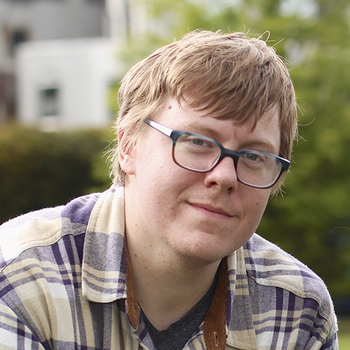Dr. Theodore S. Beers

Seminar für Semitistik und Arabistik
Fachrichtung Arabistik
Wissenschaftlicher Mitarbeiter
Raum -1.0054
14195 Berlin
I am a classically trained Persian and Arabic philologist. My undergraduate study was at Princeton University, and my doctoral work was at the University of Chicago. Most of my research falls in the area of Persian literary history—and, further, in the development of the poetic tradition—but I am increasingly striving to explore connections between premodern Persian and Arabic literature. Joining the AnonymClassic project has allowed me to focus on this effort.
My dissertation, titled The Lives of Sām Mīrzā (923–75/1517–67): Dynastic Strife and Literary World-Building in Early Modern Iran, centers on the career and work of a tenth/sixteenth-century Safavid prince. Sām Mīrzā was, from a young age, embroiled in a number of political conflicts, which cost him his freedom and eventually his life. Studying his rise and fall affords us further perspective on some of the broader challenges that faced the Safavid dynasty in the early generations of its rule. Despite his misfortune as a prince, Sām Mīrzā managed to author a well-known anthology of poets (or taẕkirah), titled Tuḥfah-i Sāmī(ca. 957/1550). This work, with its innovative structure and often surprising contents, played an important role in the maturation of the taẕkirahgenre—between its rise to popularity in Timurid Harāt, and the greater sophistication and monumental scale that would be pursued by anthologists in both Iran and India in the eleventh/seventeenth century.
A good deal of my research involves anthological sources. I have two papers that have appeared in print thus far, and both deal with taẕkirahs. One is a study of the biography of the poet Vaḥshī Bāfqī (d. 991/1583); the other focuses on a new source for the early reception of the work of Ṣā’ib Tabrīzī (d. ca. 1087/1676). Three other papers are currently in the publication process. First (by order of authorship) is an analysis of the seventh chapter of the Tuḥfah-i Sāmīfrom a Subaltern Studies perspective. Second is an article that argues for reopening the conversation around Safavid court patronage of poetry. The third paper, currently under review, is a study of a few Arabic anthologies. (I will add more detail about this, if and when its status changes to “forthcoming.”) Various other projects are at an earlier stage.
One of the best things about the current generation of Near Eastern Studies scholars is that working with manuscripts seems to be more popular than ever. This is also an area of interest for me. Some years ago, at the University of Chicago, I assisted John Woods and Evrim Binbaş on an edition of the second volume of the Ẓafar-nāmahof Sharaf al-Dīn ‘Alī Yazdī (d. 858/1454). Reading and transcribing an entire manuscript (the work exists in a unicum) was a transformative experience. I try to pay attention to the codicology of any source that I study in depth, whether or not a published edition is available. The work of the AnonymClassic team on Kalīla wa-Dimnais, of course, strongly tied to the manuscripts that we have collected.
Finally, the vogue in digital humanities scholarship has not entirely passed me by. I enjoy developing software utilities that facilitate my research, and I have made two of those publicly available as web apps. One is a calculator for abjadnumerals (abjadcalc.com); the other is a calendar converter tailored to the needs of a Safavid historian (muqawwim.com).
